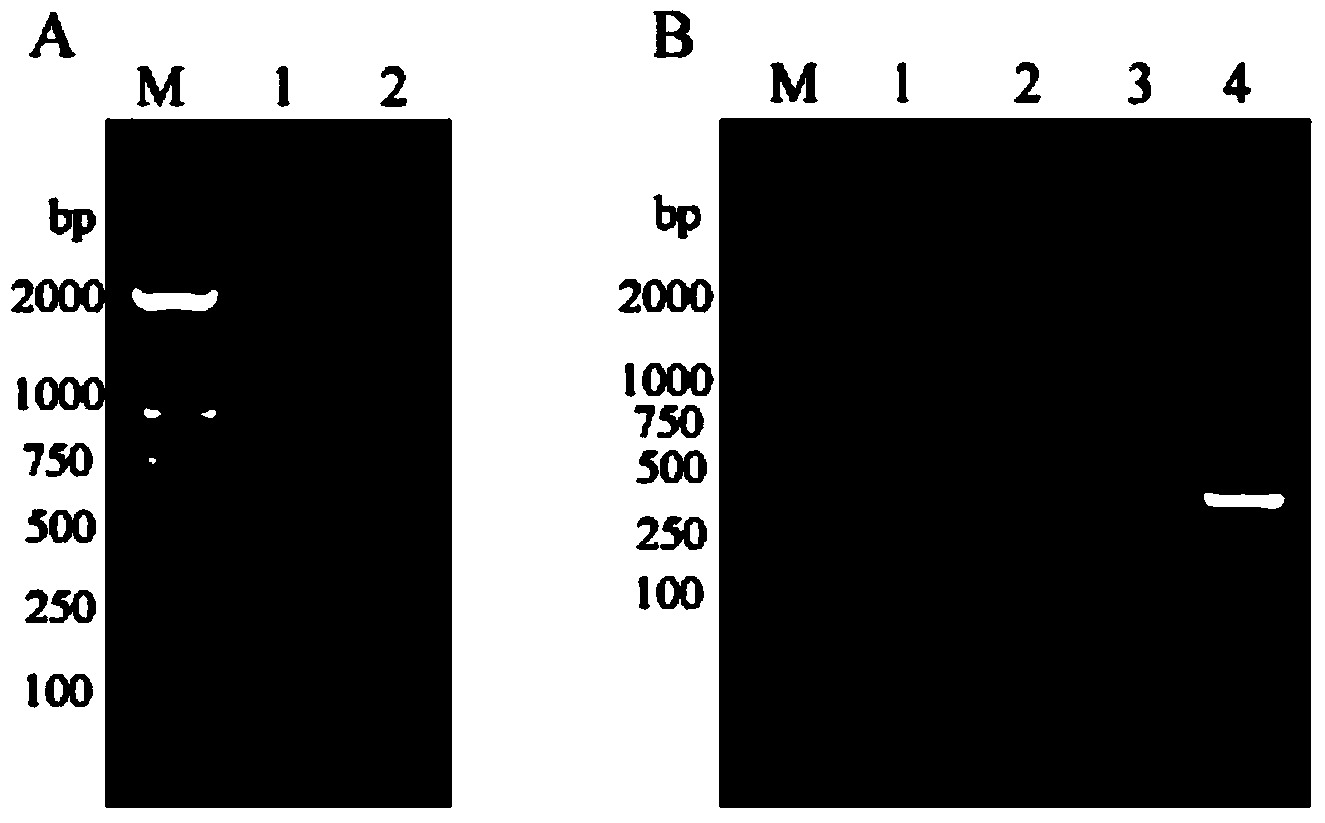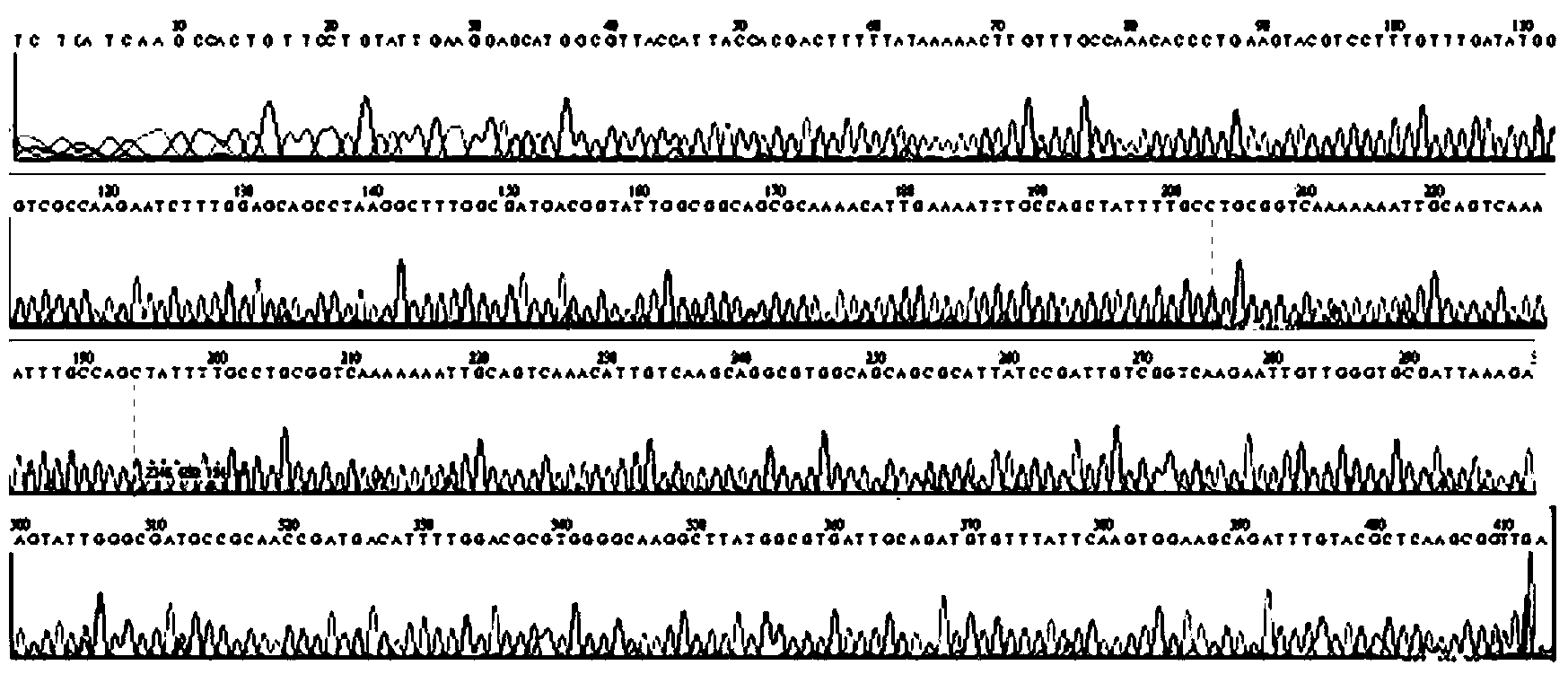Method for improving sorangium cellulosum's epothilone B yield by genetic engineering
A technology of Cystobacter cellulis and epothilone, which is applied in the field of genetic engineering, can solve the problems of complicated operation steps, long time-consuming, random results, etc., and achieves broad application prospects and the effect of improving yield.
- Summary
- Abstract
- Description
- Claims
- Application Information
AI Technical Summary
Problems solved by technology
Method used
Image
Examples
Embodiment 1
[0016] Embodiment 1: the electrotransformation and identification of S. cellulosus So ce M4, comprising the following steps:
[0017] (1) Preparation of liquid medium (8g / L potato starch, 2g / L glucose, 2g / L soybean protein hydrolyzate, 2g / L yeast extract, 8mg / L EDTA iron sodium, 1g / L MgSO 4 .7H 2 O, 1g / L CaCl 2 , 0.5g / L Tris, the solvent is water, and the pH is adjusted to 7.4 with hydrochloric acid. 115°C, 25min to sterilize), with 2.5% inoculum amount to inoculate S. cellulosus Soce M4 to 30ml liquid medium, 30°C, 180rpm Cultivate until the OD595nm is about 0.8, put the bacterial solution in an ice bath for 10 minutes, centrifuge at 6000 rpm, and 4°C for 6 minutes, collect the cells, wash the bacteria twice with ice-cold sterile water, suspend the cells with 400 μl sterile water, and use 100 μl per tube To pack.
[0018] (2) The construction method of Escherichia coli and Bacillus subtilis shuttle plasmid PBEP43 is disclosed in the literature: Luo Wenhua, Guo Yong, Han Sh...
Embodiment 2
[0026] Embodiment 2: the RT-PCR identification of So ce M4 original bacterium and recombinant bacterium, comprises the steps:
[0027] (1) Extraction of RNA from So ce M4 original bacteria and recombinant bacteria:
[0028] 1) Take 1.5ml of SoceM4 original bacteria or recombinant bacteria cultured for 96h, put them into sterile EP tubes treated with DEPC water, centrifuge at 8000rpm for 2min to get the bacteria pellet, and wash the bacteria with DEPC water.
[0029] 2) Fully grind the cells with liquid nitrogen, add 1ml Trizol solution to each tube, shake vigorously for 15s, let stand at room temperature for 3min, and centrifuge at 12000g for 10min at 4°C;
[0030] 3) Carefully transfer the upper aqueous phase to another EP tube, add an equal volume of chloroform, let stand at room temperature for 3 minutes, and centrifuge at 12000g for 10 minutes at 4°C;
[0031] 4) Carefully transfer the upper aqueous phase to another EP tube, add 0.5 volume of isopropanol, mix gently, let ...
Embodiment 3
[0043] Embodiment 3: the fermentation of So ce M4 original bacterium and recombinant bacterium and product identification thereof, comprise the steps:
[0044] (1) Inoculate the So ce M4 original bacteria with 2% inoculum in the G52 liquid medium containing 2% acid-base-treated XAD-16 macroporous adsorption resin, cultivate at 30°C, 180rpm for 24 hours, Sodium acetate, sodium propionate, cysteine and biotin were added to the base at final concentrations of 6 mM, 3 mM, 60 μmol and 6 μg / L, respectively. Cultivate at 30°C and 180rpm for 7 days, then extract XAD-16 resin with 40ml of methanol, shake at 30°C for 24h, then extract with 20ml of methanol for another 24h under the same conditions, combine the extracts, and filter through a 0.45μm filter membrane, 40 Concentrate by rotary evaporation at ℃ to complete dryness, dissolve with 2ml of methanol, and filter through a 0.22μm membrane filter.
[0045] (2) Prepare 1mg / L, 5mg / L, 10mg / L, 25mg / L and 50mg / L epothilone B standard s...
PUM
 Login to View More
Login to View More Abstract
Description
Claims
Application Information
 Login to View More
Login to View More - R&D
- Intellectual Property
- Life Sciences
- Materials
- Tech Scout
- Unparalleled Data Quality
- Higher Quality Content
- 60% Fewer Hallucinations
Browse by: Latest US Patents, China's latest patents, Technical Efficacy Thesaurus, Application Domain, Technology Topic, Popular Technical Reports.
© 2025 PatSnap. All rights reserved.Legal|Privacy policy|Modern Slavery Act Transparency Statement|Sitemap|About US| Contact US: help@patsnap.com



